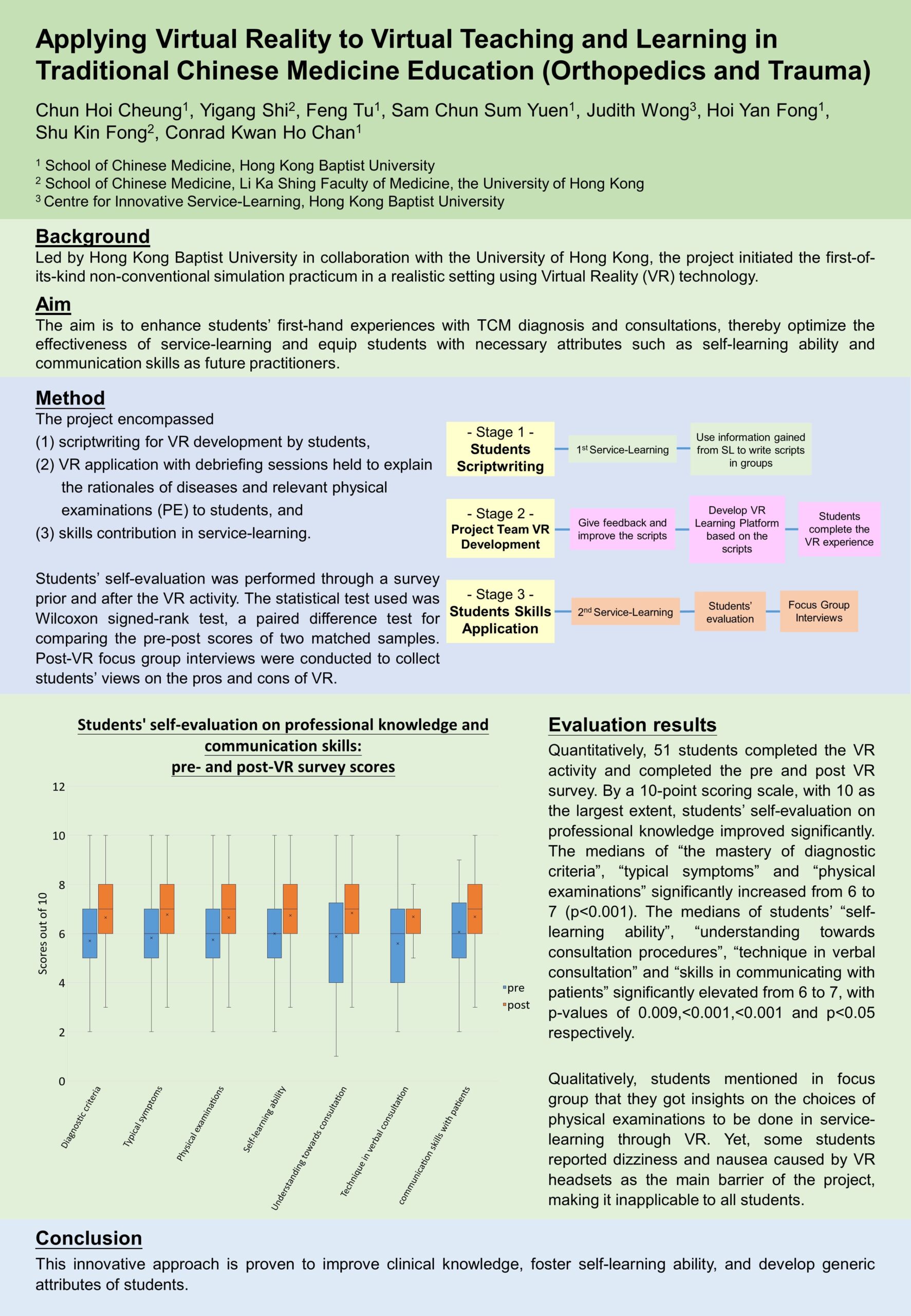Filter Presentations
1 blog found
Poster Presentation Time: 1225-1400; 1500-1600
Venue: F4, Tai Po-Shek-O Room, Lower Level I
Presenter(s)
– Mr Chun Hoi CHEUNG, Assistant Professor of Practice, School of Chinese Medicine, Hong Kong Baptist University
– Miss Hoi Yan FONG, Hong Kong Baptist University
– Miss Judith WONG, Hong Kong Baptist University
– Mr Conrad Kwan Ho CHAN, Hong Kong Baptist University
– Mr Shu Kin FONG, Hong Kong Baptist University
Abstract
Background: Led by Hong Kong Baptist University in collaboration with the University of Hong Kong, the project initiated the first-of-its-kind non-conventional simulation practicum in a realistic setting using Virtual Reality(VR) technology. Aim: The aim is to enhance students’ first-hand experiences with TCM diagnosis and consultations, thereby optimize the effectiveness of service-learning and equip students with necessary attributes such as self-learning ability and communication skills as future practitioners. Method The project encompassed (1)scriptwriting for VR development, (2)VR application with debriefing sessions held to explain the rationales of diseases and relevant physical examinations(PE) to students, and (3)skills contribution in service-learning. Numerical data was obtained through pre and post VR survey for analysis. The statistical test used was Wilcoxon signed-rank test, a paired difference test for comparing the pre-post scores of two matched samples. Post-VR focus group interviews were conducted to collect students’ views on the pros and cons of VR. Evaluation results Quantitatively, 51students completed the VR activity and responded the pre and post VR survey. Under 10-mark scoring scale with 10 as the largest extent, students’ self-evaluation on professional knowledge improved significantly. The medians of the mastery of diagnostic criteria, typical symptoms and physical examinations all increased from 6 to 7 with p<0.001. Students’ self-learning ability, understanding towards consultation procedures, technique in verbal consultation and skills in communicating with patients elevated from 6 to 7 in median, with p-values of 0.009,<0.001,<0.001 and p<0.05 respectively. Qualitatively, students mentioned in focus group that they got insights on the choices of physical examinations to be done in service-learning through VR. Yet, some students reported dizziness and nausea caused by VR headsets as the main barrier of the project, making it inapplicable to all students. Conclusion: This innovative approach is proven to improve clinical knowledge, foster self-learning ability, and develop generic attributes of students.
Theme: 1: Showcase Project Achievements
